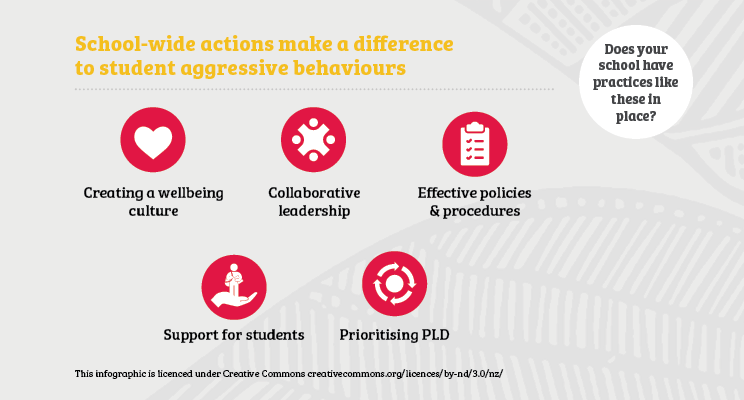
| Attachment | Size |
|---|---|
| 1.46 MB |
This study used data collected through the Wellbeing@School student and teacher surveys to give schools practical ideas about ways to enhance students’ wellbeing and decrease aggressive and bullying behaviours. The study's findings are summarised in the Making a difference to student wellbeing infographic report. The methodology and detailed findings are presented in Making a difference to student wellbeing—a data exploration.
New Zealand students face challenges to their social and emotional wellbeing. We have high rates of school bullying compared with other countries, and involvement in bullying behaviour is associated with negative health and education outcomes for young people. We wanted to know what the Wellbeing@School data could tell us about teacher and school practices that were associated with higher levels of student wellbeing and lower levels of aggressive and bullying behaviours.
We analysed data from over 58,000 students and 3,400 teachers at 400 schools. We applied a multilevel statistical model to understand the relationship between two teacher measures (teaching for wellbeing, and school-wide actions) and two student measures (student wellbeing, and student aggressive behaviours).
We found higher levels of teaching for wellbeing practices were associated with higher levels of student wellbeing, and higher levels of school-wide actions were associated with lower levels of student aggressive behaviours.





